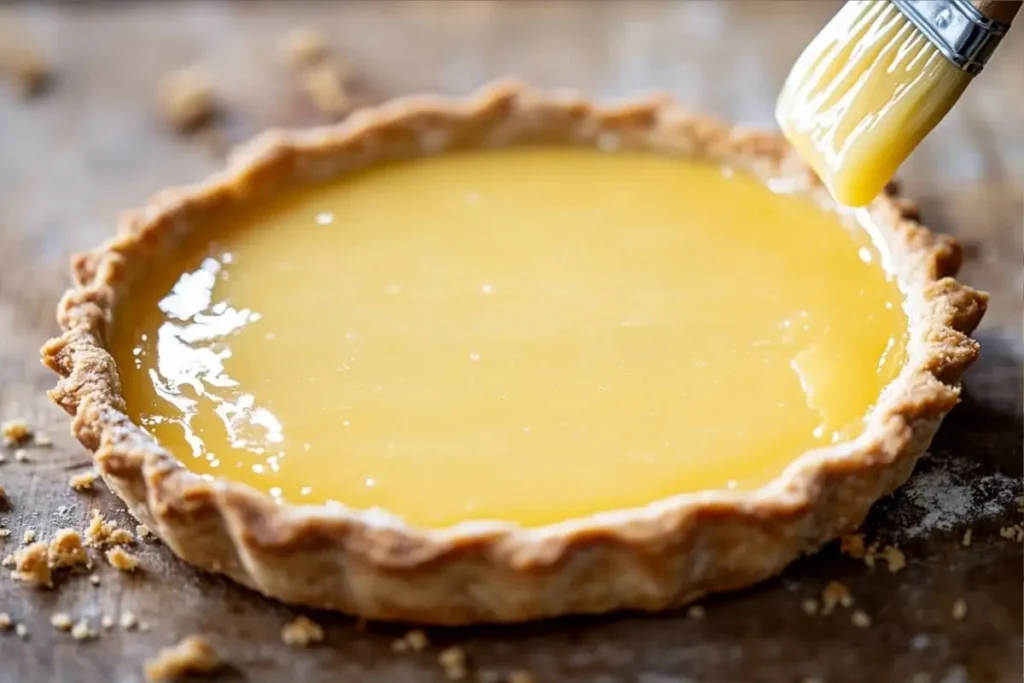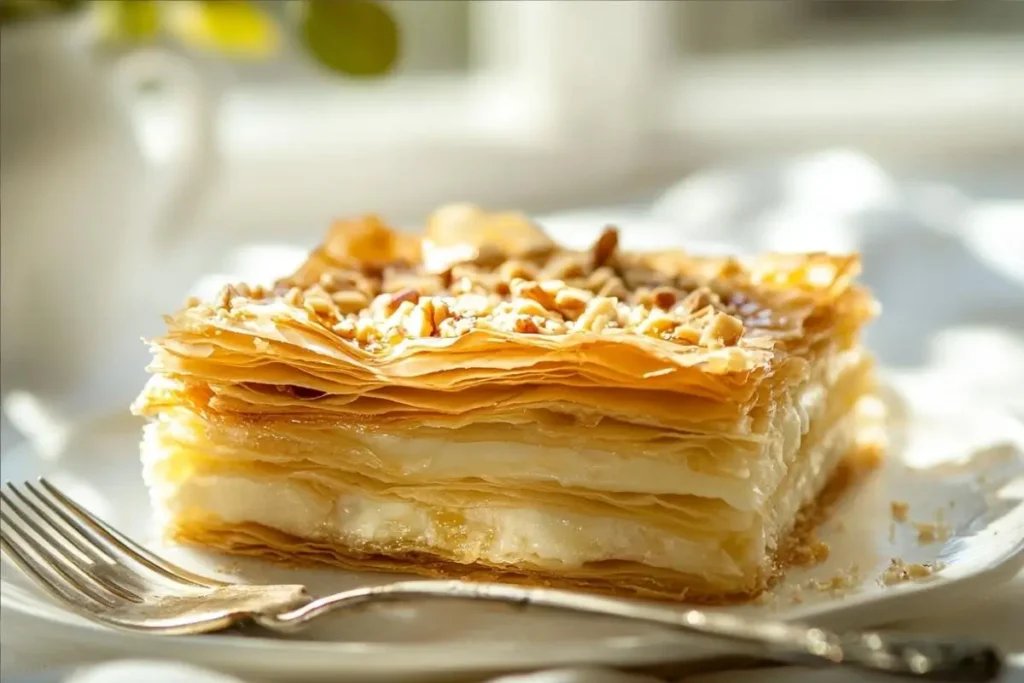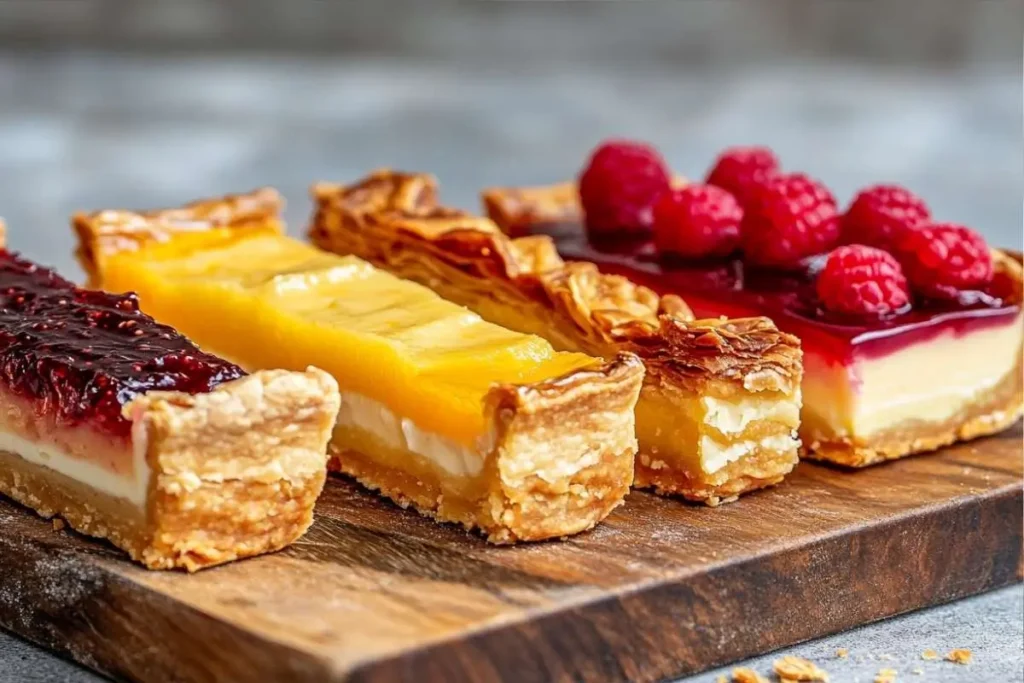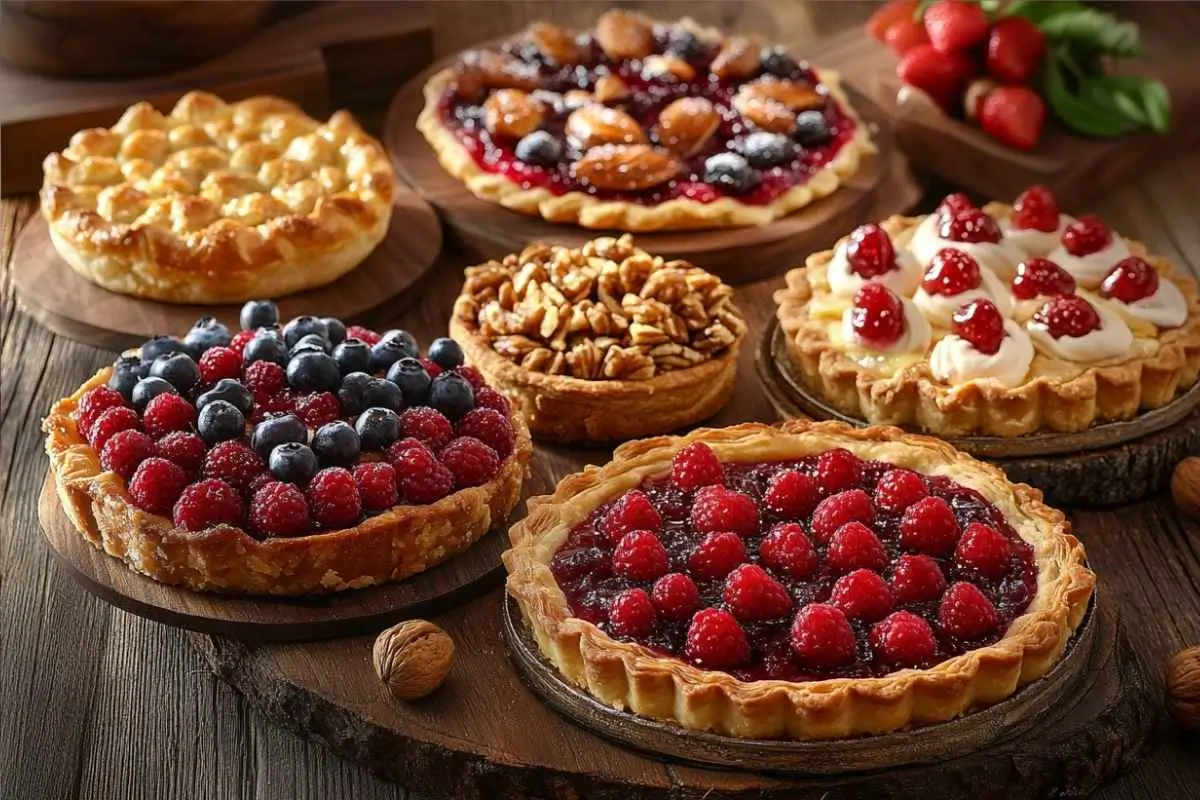Tarts are one of the most beloved pastries worldwide, offering a delicate balance of crisp crust and delicious filling. Whether you’re a fan of sweet fruit tarts, rich chocolate tarts, or savory quiches, there’s a tart for every occasion. But have you ever wondered, what are the four types of tarts?
Understanding the four main types of tarts—shortcrust, puff pastry, choux pastry, and filo pastry—helps home bakers and pastry lovers create the perfect tart for any occasion. Each type has a distinct texture, preparation method, and best uses.
In this article, we’ll explore: ✔️ The key characteristics of each tart type
✔️ Popular sweet and savory tart varieties
✔️ Tips for making the perfect tart crust and fillings
By the end, you’ll know exactly which tart pastry suits your next baking project!
What Are the Four Types of Tarts? – Defining Tart Pastries
What Is a Tart?
A tart is a pastry dish consisting of a firm, crisp crust filled with a variety of ingredients, ranging from fresh fruits and custards to cheese and vegetables. Unlike pies, tarts usually have an open top with no upper crust, showcasing their delicious fillings.
Historically, tarts originated in medieval Europe, where they were first made as savory dishes before evolving into the sweet treats we know today. Today, they’re a staple in French patisserie, British baking, and Mediterranean cuisine.
Common Tart Ingredients
The foundation of a tart is its crust, which can be made using various types of pastry. The most common ingredients include:
✔️ Flour – The base structure for the crust.
✔️ Butter – Adds flakiness and richness.
✔️ Eggs – Helps bind the dough for a firm texture.
✔️ Sugar & Salt – Enhances flavor.
✔️ Water or Dairy – Brings the dough together for the right consistency.
Want to try a classic tart recipe? Check out our Old Fashioned Sweet Potato Tarts for a nostalgic homemade treat!
Now that we know the basics, let’s explore what are the four types of tarts and how they differ!
Shortcrust Pastry – The Classic Tart Base
When asking what are the four types of tarts, shortcrust pastry is the most common and versatile base. This type of pastry is known for its buttery, crumbly texture and is widely used in both sweet and savory tarts.
What Is Shortcrust Pastry?
Shortcrust pastry is made with a simple combination of flour, butter, sugar (for sweet tarts), and a little liquid to bind. The result is a crisp yet tender crust that holds its shape beautifully.
This type of pastry is used for:
✔️ Fruit tarts – Such as strawberry tarts and apple tarts.
✔️ Custard-based tarts – Like the classic French tarte au citron (lemon tart).
✔️ Savory tarts – Including quiche, which is essentially a tart filled with eggs, cheese, and vegetables.

How to Make Perfect Shortcrust Pastry
Achieving a flaky yet firm shortcrust pastry requires minimal handling to avoid overworking the dough. Here’s how to make it:
1️⃣ Keep ingredients cold – Butter should be chilled to maintain flakiness.
2️⃣ Use the “rub-in” method – Combine flour and butter until the mixture resembles breadcrumbs.
3️⃣ Add just enough liquid – Too much water makes the crust tough.
4️⃣ Chill before rolling – Resting the dough prevents shrinkage during baking.
💡 Pro Tip: Blind bake shortcrust pastry (pre-baking without filling) to prevent soggy bottoms—especially for custard-filled tarts!
Now that we’ve covered shortcrust pastry, let’s move on to puff pastry, a flakier, layered tart base.
💡 Looking for more inspiration? Try our Papas Locas – Loaded Potatoes for a hearty, comforting dish!
Puff Pastry – Light, Buttery, and Crispy
If you love airy, flaky layers in tarts, puff pastry is your go-to option. When discussing what are the four types of tarts, puff pastry is second on the list for its delicate, multi-layered texture.
What Is Puff Pastry?
Puff pastry is made by repeatedly folding butter into the dough, creating hundreds of thin, crispy layers. Unlike shortcrust, it puffs up dramatically in the oven, making it ideal for light, crispy tarts.
Puff pastry is used for:
✔️ Fruit tarts – Such as raspberry or pear tarts with a caramelized surface.
✔️ Savory tarts – Like tomato tarts or cheese-filled pastries.
✔️ Classic French tarts – Tarte Tatin, a famous caramelized apple tart.
How to Work with Puff Pastry
Puff pastry requires patience and precision to get the best results. Here’s how to make it work:
1️⃣ Use high-quality butter – The richer the butter, the flakier the pastry.
2️⃣ Keep it cold – Like shortcrust, puff pastry bakes best when chilled before going into the oven.
3️⃣ Roll carefully – Roll out gently to avoid breaking the delicate layers.
4️⃣ Bake at high heat – Puff pastry needs high temperatures to rise properly.
💡 Pro Tip: If using store-bought puff pastry, always let it thaw slightly before rolling it out, but don’t let it get too soft!
Want more crispy pastry ideas? Check out Why Do You Soak Sweet Potatoes Before Baking? to learn how moisture affects texture in baked goods!
Shortcrust and puff pastry are two of the four main tart types, but there are two more unique variations—choux and filo pastry—that bring a different texture and taste to tarts. Let’s explore them next!
Choux Pastry – Light and Airy Tarts
Among the four types of tarts, choux pastry stands out for its light, airy texture and unique preparation method. Unlike shortcrust or puff pastry, choux pastry puffs up due to steam, creating a crisp shell with a hollow interior.
What Is Choux Pastry?
Choux pastry (pâte à choux) is a light dough made with butter, water, flour, and eggs. Instead of relying on baking powder or yeast, it puffs up due to steam created from high moisture content.
Choux pastry is used for:
✔️ Cream-filled tarts – Mini choux tarts filled with pastry cream or whipped cream.
✔️ French-style desserts – Such as Paris-Brest, a ring-shaped choux pastry tart with praline cream.
✔️ Savory tarts – Cheese or seafood-filled choux tarts, great for appetizers.
How to Make Choux Pastry Work for Tarts
Since choux pastry is lighter and more delicate, it requires a different technique than other tart doughs.
1️⃣ Cook the dough first – Choux pastry starts on the stovetop before baking.
2️⃣ Incorporate eggs slowly – Adding eggs one at a time ensures the perfect consistency.
3️⃣ Bake at high heat – A hot oven (around 400°F/200°C) allows the pastry to rise properly.
4️⃣ Let it cool before filling – Choux pastry needs time to set before adding fillings.
💡 Pro Tip: If you want your choux pastry tarts to stay crisp longer, avoid filling them until just before serving.
Choux pastry adds a light, creamy element to tarts, but the final major tart category—filo pastry—brings an ultra-crispy, paper-thin texture that’s perfect for layered, flaky desserts.
💡 Craving a warm, cheesy dish? Try our Philly Cheesesteak Tortellini for a comforting meal!
Filo Pastry – Thin, Crispy, and Delicate
The last answer to what are the four types of tarts is filo pastry, known for its paper-thin layers and extra crispy texture. Filo (or phyllo) pastry is often used in Mediterranean and Middle Eastern tarts.

What Is Filo Pastry?
Filo pastry consists of ultra-thin sheets of unleavened dough, typically brushed with butter or oil and layered to create crisp, flaky textures. Unlike puff pastry, filo doesn’t contain much fat, so it needs extra moisture to stay crisp after baking.
Filo pastry is used for:
✔️ Layered tarts – Such as baklava, a sweet nut-filled filo tart with honey syrup.
✔️ Savory tarts – Like Greek spanakopita, a spinach and feta tart.
✔️ Fruit tarts – Crispy filo shells filled with custard or caramelized fruits.
💡 Pro Tip: Mediterranean tarts often feature heart-healthy ingredients like olive oil, nuts, and fresh vegetables. If you’re interested in a diet rich in these wholesome elements, learn more about the Mediterranean diet, one of the best for heart health.
How to Handle Filo Pastry for Tarts
Since filo pastry is delicate and dries out quickly, handling it requires some care:
1️⃣ Keep it covered – Prevent drying by covering filo sheets with a damp towel.
2️⃣ Brush each layer – Butter or oil between layers ensures crispiness.
3️⃣ Stack multiple layers – Using at least 4-6 layers helps prevent tearing.
4️⃣ Bake until golden brown – Filo pastry crisps up beautifully when baked at 375°F (190°C).
💡 Pro Tip: Want an extra crispy texture? Brush filo layers with melted clarified butter instead of regular butter—it prevents sogginess!
Now that we’ve explored the four main types of tarts, let’s take a closer look at their key differences and best uses in the next section!
What Are the Four Types of Tarts? – Key Differences & Best Uses
Now that we’ve answered what are the four types of tarts, let’s compare their unique characteristics, textures, and best uses. Each type of tart pastry offers distinct advantages, making them ideal for different recipes.

Shortcrust vs. Puff Pastry – Rich & Buttery vs. Light & Flaky
Shortcrust pastry and puff pastry are two of the most common tart bases, but they differ in texture and preparation:
✔ Shortcrust Pastry – Dense, crumbly, and buttery, making it perfect for custard tarts, fruit tarts, and savory quiches.
✔ Puff Pastry – Airy, flaky, and layered, best for vol-au-vents, mille-feuille-style tarts, and light fruit pastries.
💡 Best Choice: If you want a sturdy tart that holds fillings well, shortcrust is ideal. But if you prefer a light, crispy tart, go for puff pastry!
Choux vs. Filo Pastry – Light & Airy vs. Thin & Crispy
Choux and filo pastries are less common for traditional tarts but still play a major role in certain dishes.
✔ Choux Pastry – Hollow and airy, best for cream-filled tarts, eclairs, and profiteroles.
✔ Filo Pastry – Crisp, paper-thin layers, commonly used in baklava, Greek spanakopita, and phyllo fruit tarts.
💡 Best Choice: If you need a tart that’s delicate but sturdy, choux pastry is a great option. But for ultra-crispy, flaky layers, filo pastry is the way to go!
Choosing the Right Tart for Your Recipe
Now that we’ve compared the textures and uses of different tart pastries, let’s discuss how to choose the best one for your baking needs.
Which Tart Pastry Works Best for Desserts?
If you’re making classic dessert tarts, consider these options:
✔ For rich, buttery flavors: Use shortcrust pastry for custard tarts, chocolate tarts, and fruit-filled tarts.
✔ For extra flakiness: Puff pastry works well for light fruit tarts and French pastries.
✔ For cream-filled treats: Choux pastry is best for Paris-Brest, profiterole tarts, or eclairs.
✔ For crispy layers: Filo pastry is perfect for Mediterranean-style nut tarts or phyllo custard tarts.
💡 Pro Tip: If you want a stable, sliceable tart, go for shortcrust. For something light and airy, puff pastry is a better fit.
While tarts can be indulgent, balancing portion sizes and ingredients makes them a great treat. Using fresh fruits, nuts, or dairy alternatives can enhance the nutritional value, aligning with MyPlate guidelines on balanced eating.
Which Tart Pastry is Best for Savory Dishes?
Tarts aren’t just for desserts! Many savory recipes rely on the right pastry choice:
✔ For quiches and cheese tarts – Shortcrust pastry is sturdy enough to hold hearty fillings like eggs, cheese, and vegetables.
✔ For puffed, golden crusts – Puff pastry works for savory galettes, tomato tarts, and French-style cheese tarts.
✔ For bite-sized appetizers – Choux pastry makes savory gougères (cheese puffs) and filled tartlets.
✔ For Mediterranean flavors – Filo pastry is great for spanakopita (spinach and feta tarts) and crispy meat-filled tarts.
💡 Final Tip: If you’re looking for a tart that holds a lot of filling, shortcrust is the best option. But if you prefer light, crispy layers, filo or puff pastry will give you that crunch.
The Importance of Tarts & Final Thoughts
Tarts are one of the most versatile pastries, offering both sweet and savory variations that cater to every taste. Whether you’re craving a classic fruit tart, a rich custard tart, a hearty savory tart, or a rustic free-form tart, there’s a type for every occasion.
Understanding the four main types of tarts helps bakers and food lovers appreciate the differences in crusts, fillings, and baking techniques. Each tart brings its own unique flavor and presentation, making it a delightful dish for both casual and special occasions.
Which Type of Tart Should You Try First?
✔ For beginners – Start with a custard tart or a savory tart for a simple yet satisfying bake.
✔ For fruit lovers – A fresh fruit tart is light, refreshing, and visually stunning.
✔ For a rustic touch – Try a free-form tart (galette) for a fuss-free baking experience.
💡 Want a nostalgic homemade tart recipe? Try Old Fashioned Sweet Potato Tarts, a perfect mix of tradition and comfort!
Final Thoughts
Tarts are a must-try for any baker or food enthusiast. With endless flavor possibilities and simple techniques, they can be as easy or as complex as you make them. Whether you’re baking for a casual family meal or an elegant gathering, mastering different tart types will elevate your dessert and savory baking skills.
Which tart will you bake next? Let us know in the comments! 😊

